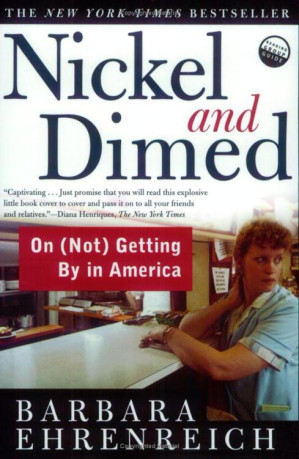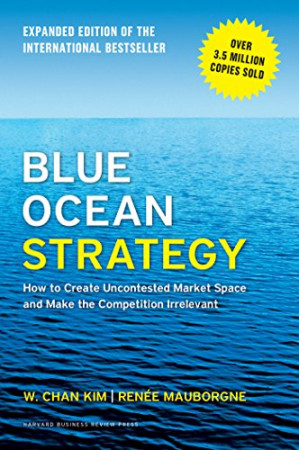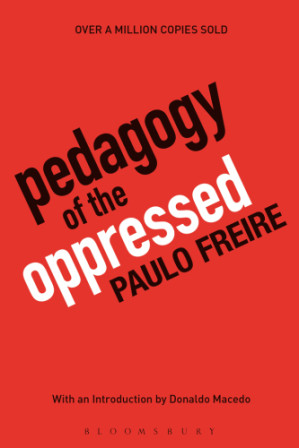The Working Poor's Impossible Math
No matter how hard you work, minimum wage simply doesn't add up to survival

Book summary
by Barbara Ehrenreich
On (Not) Getting By in America
Journalist explores low-wage work and survival in America
Topics
Read each state's experience as a separate case study, then use Readever to compare the systemic patterns across locations. Highlight Ehrenreich's mathematical breakdowns of living costs versus wages, and use the AI to calculate current equivalents based on today's economic data. Create notes about the psychological toll of low-wage work and how it affects decision-making.
Things to know before reading
A groundbreaking investigative work where journalist Barbara Ehrenreich goes undercover to experience firsthand the struggles of America's working poor, taking minimum-wage jobs in three different states to understand the harsh realities of low-wage survival.
Ehrenreich's experiment reveals fundamental truths about poverty and labor in America
No matter how hard you work, minimum wage simply doesn't add up to survival
Poverty isn't just about low income—it's about expensive survival
Low-wage work systematically strips workers of autonomy and respect
Ready to continue? Launch the Readever reader and keep turning pages without paying a cent.
Nickel and Dimed shatters the myth that anyone can succeed through hard work alone by revealing how the deck is stacked against low-wage workers through systemic barriers, impossible living costs, and workplace exploitation.
Key idea 1
No matter how hard you work, minimum wage simply doesn't add up to survival
Ehrenreich discovers that even working multiple jobs, low-wage workers face impossible choices between rent, food, and healthcare. The math of minimum wage versus living costs creates a permanent state of financial precarity.
Remember
Key idea 2
Poverty isn't just about low income—it's about expensive survival
Being poor costs more in countless ways: from higher transportation costs without a car, to expensive short-term housing, to the physical toll of demanding work without adequate healthcare.
Remember
Key idea 3
Low-wage work systematically strips workers of autonomy and respect
Ehrenreich experiences how low-wage jobs enforce rigid control over workers' bodies, time, and dignity through constant surveillance, arbitrary rules, and the threat of immediate termination.
Remember
Nickel and Dimed is Barbara Ehrenreich's groundbreaking investigative journalism experiment where she left her comfortable middle-class life to work minimum-wage jobs in three different states: Florida as a waitress and hotel maid, Maine as a cleaning woman and nursing home aide, and Minnesota as a Wal-Mart associate. Her goal was simple yet profound: could she survive on the wages available to America's working poor?
The answer she discovers is a resounding no. Ehrenreich's journey reveals the brutal mathematics of poverty—how even working multiple jobs, low-wage workers face impossible choices between rent, food, and healthcare. She exposes the physical and psychological toll of demanding work without adequate pay or benefits, the systematic erosion of worker dignity, and the hidden costs that make poverty more expensive than middle-class life.
Open Readever's reader to highlight passages, ask the AI companion questions, and keep exploring without paying a cent.
Nickel and Dimed stands as one of the most important works of investigative journalism of the 21st century. Ehrenreich's undercover experiment succeeds not just as social science but as compelling narrative—readers feel the physical exhaustion of scrubbing floors, the psychological stress of constant surveillance, and the mathematical impossibility of making ends meet.
What makes the book particularly powerful is Ehrenreich's ability to connect individual struggles to systemic issues. She shows how low wages, unaffordable housing, inadequate public transportation, and employer exploitation create a perfect storm that traps workers in poverty despite their hard work. The book challenges fundamental American myths about meritocracy and reveals how the deck is systematically stacked against the working poor.
Anyone interested in understanding economic inequality
Policy makers and social advocates
Business leaders and managers
Students of sociology, economics, and journalism
Readers who want to understand the human cost of low-wage work
Barbara Ehrenreich (1941-2022) was an acclaimed journalist, activist, and author known for her sharp social commentary and investigative work. Born in Butte, Montana to a working-class family, she earned a PhD in cellular immunology before turning to journalism. Ehrenreich wrote over 20 books on topics ranging from class and gender to healthcare and politics.
Her work consistently challenged conventional wisdom and gave voice to marginalized perspectives. Beyond Nickel and Dimed, she's known for "Bright-Sided" (critiquing positive thinking culture) and "Natural Causes" (examining the healthcare industry). Ehrenreich co-founded the Economic Hardship Reporting Project to support journalists covering poverty and economic inequality.
Build your personalized reading stack
Groundbreaking investigative journalism that changed how America sees poverty
Personal immersion in the lives of the working poor
Essential reading on economic inequality and labor rights
Combines rigorous research with compelling narrative
Sign in to Readever to keep reading with AI guidance, instant summaries, and synced notes.
Nickel and Dimed remains essential reading two decades after its publication because the problems it exposes have only worsened. Ehrenreich's experiment revealed that hard work alone cannot overcome systemic barriers to economic security. The book forces readers to confront uncomfortable truths about who bears the costs of America's economic system and challenges us to imagine a society where work actually pays enough to live.
Ehrenreich's approach was methodologically rigorous for an investigative journalism project. She established clear rules for her experiment:
In Key West, Ehrenreich worked as a waitress at a family restaurant and later as a hotel maid. She discovered:
In Portland, she worked for a cleaning service and later at a nursing home:
In Minneapolis, she worked as a Wal-Mart "associate":
Ehrenreich discovered that affordable housing is virtually nonexistent for low-wage workers. She often had to:
Without reliable transportation, low-wage workers face additional challenges:
The absence of healthcare benefits creates a vicious cycle:
Ehrenreich observed how low-wage work systematically strips workers of their dignity:
Living in constant financial precarity creates a survival mindset:
Nickel and Dimed had significant impact on public discourse and policy:
Two decades after publication, Nickel and Dimed remains critically relevant:
Ehrenreich's work continues to challenge the myth that hard work alone guarantees success in America, forcing readers to confront the systemic barriers that make poverty inevitable for millions of working people.

W. Chan Kim & Renée Mauborgne
Create uncontested market space and make competition irrelevant

Paulo Freire
Revolutionary education theory empowering oppressed through critical consciousness

David Grann
A tale of shipwreck, mutiny, and murder from the author
Start reading Nickel and Dimed for free and unlock personalized book journeys with Readever.